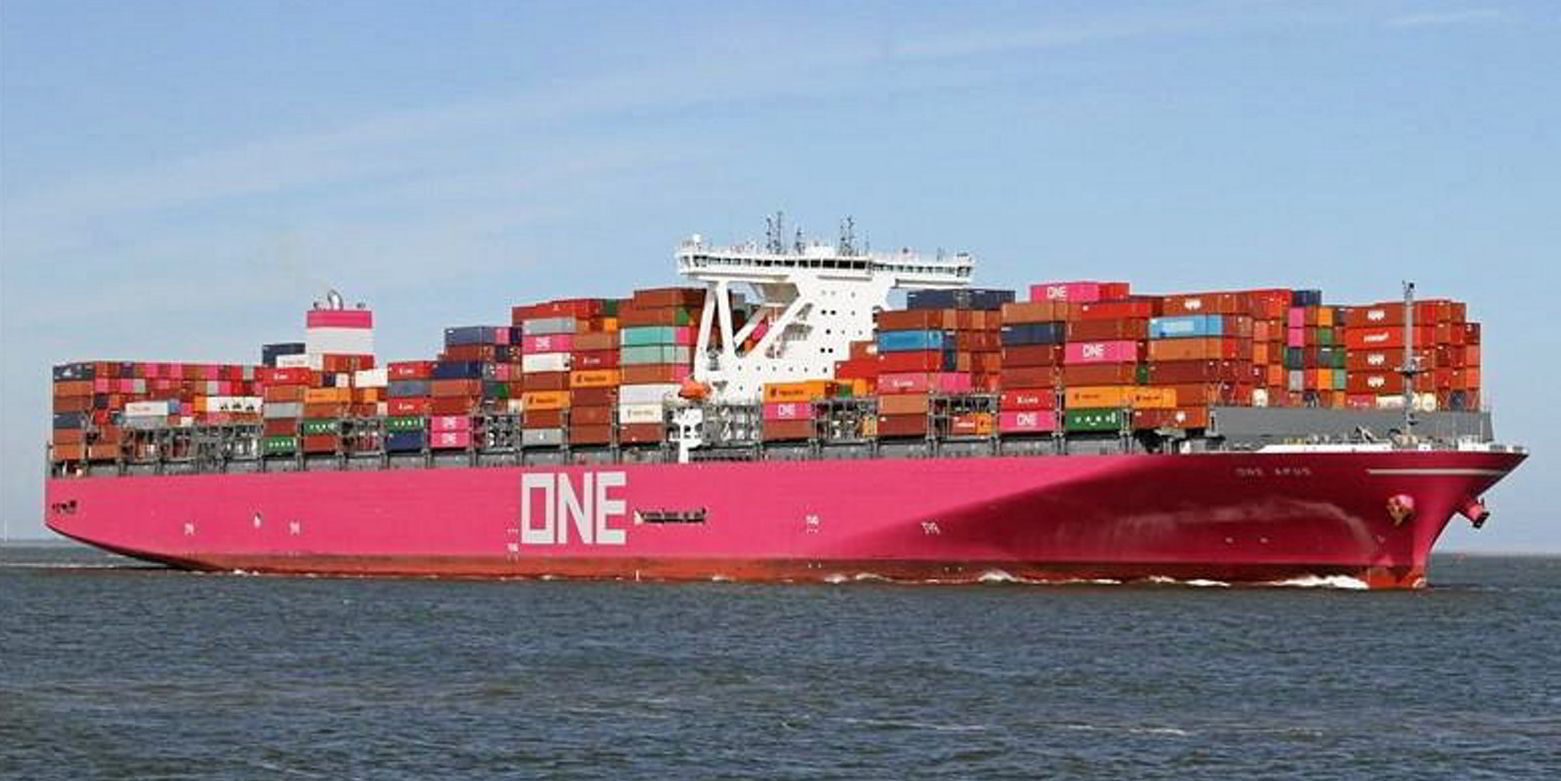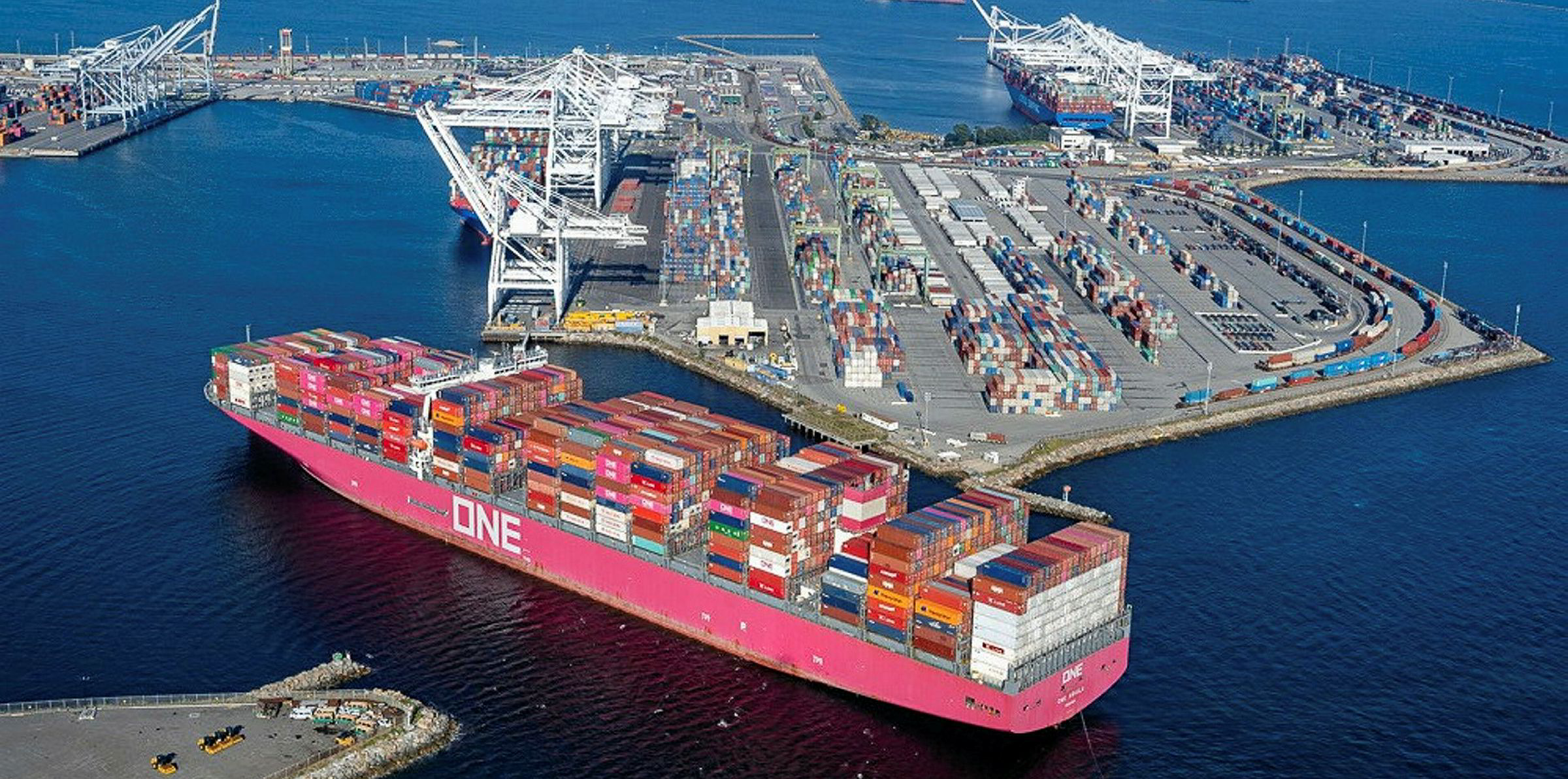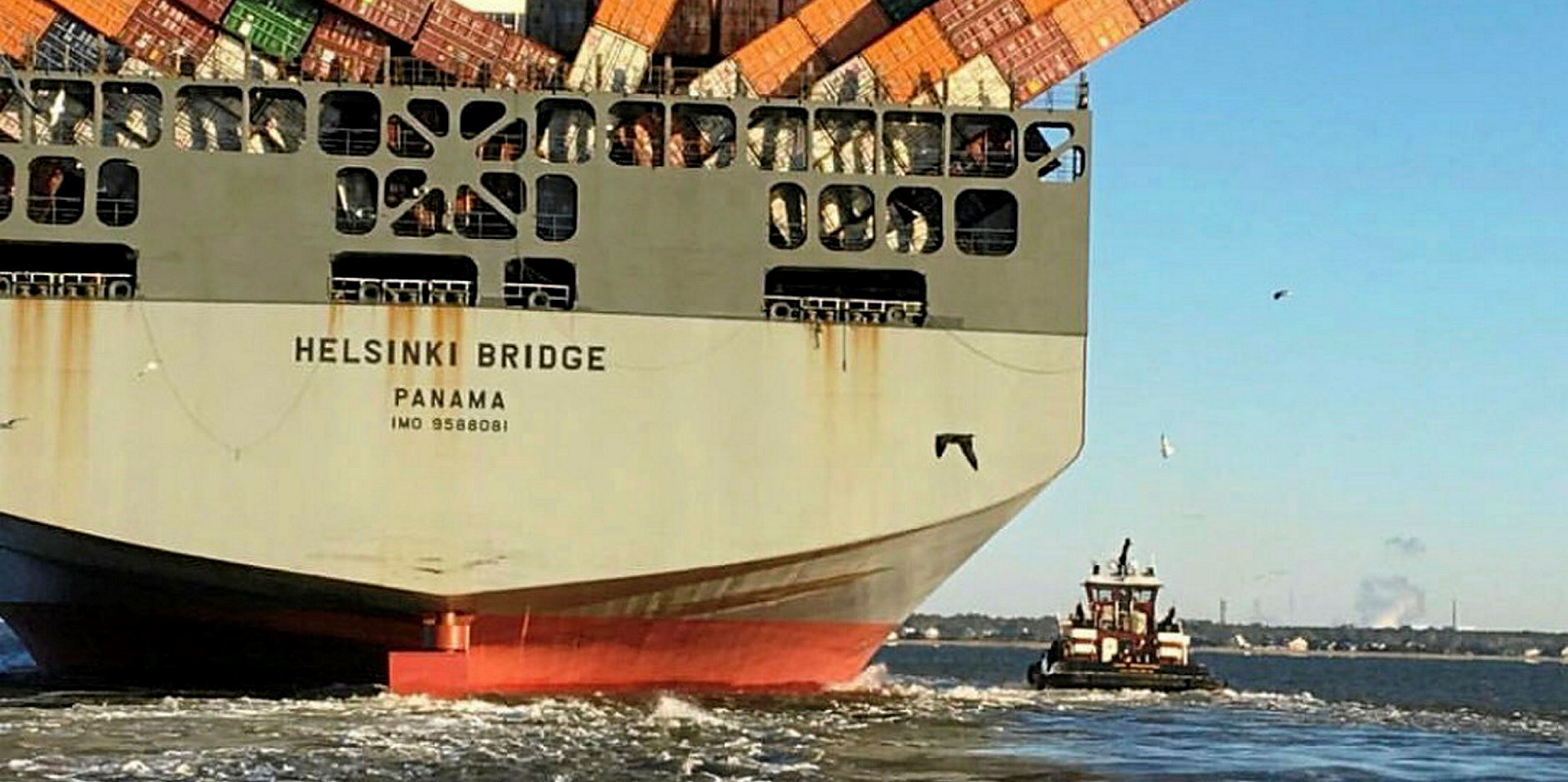Ocean Network Express (ONE) has suffered its second container collapse in less than a month with a "significant" number of containers lost overboard.
The incident aboard the 14,000-teu ONE Apus (built 2019), which is serving on ONE’s Far East Pacific 2 (FP2) service, occurred while the ship was en route to Long Beach, California.
The ship is operated by ONE network and is operated by NYK Line, with technical management by subsidiary NYK Shipmanagement.
The manager, which blamed the incident on “severe weather conditions”, said it took place late on Monday about 1,600 nautical miles (2,963 km) north west of Hawaii.
“The vessel was en route from Yantian, China, to Long Beach when it encountered a storm cell producing gale-force winds and large swells which caused the ONE Apus to roll heavily causing the containers to dislodge and fall into the ocean,” NYK Shipmanagement said in a statement.
The master of the Japanese-flagged vessel is said to have diverted the ship to ensure the ongoing safety of the crew and ship until conditions eased.
Assessment too dangerous
Later on Wednesday, owner Chidori Ship Holding and manager NYK said the ship was proceeding in a westerly direction towards Japan with plans to seek a suitable port to right unstable containers, assess any damage and determine the exact numbers of containers lost after encountering severe weather.
Early investigations have determined that the impacted container bays remain unsafe for close-quarter inspections, the companies added.
"However, it is estimated that the number of lost or damaged units could exceed 1,900, of which some 40 are believed to be dangerous goods containers," they said.
The focus remains getting the ship to a safe port to ensure the ongoing safety of the crew, the vessel and the cargo on board.
"A full investigation will be conducted into this incident in conjunction with the flag state and the relevant maritime authorities," the companies added.
“A notification was sent to the US Coast Guard in Honolulu and NYK Shipmanagement is coordinating with stakeholders to find a port of refuge for the vessel to assess any damages and determine the numbers of containers lost.”
ONE said in a customer advisory posted on its website that investigations were ongoing and further information would be provided once available.
“The vessel schedule is expected to be delayed and her schedule recovery plan is currently underway which will be advised subsequently,” it said.
Gale-force winds and large swells
ONE said it “regretted the inconvenience caused” in what is an incident similar to one that occurred at the start of November 2020.
The 14,052-teu ONE Aquila (built 2018) was also en route to Long Beach on the US Pacific coast when it suffered a container collapse.
ONE said a limited number of containers were affected by the incident aboard the ONE Aquila, which was deployed in the Pacific South Loop 7 (PS7) service.
In March last year another ONE containership – the 8,614-teu Helsinki Bridge (built 2012) – lost several containers overboard off the US.
The Panamanian-flagged vessel was heading into Wilmington from Boston when it hit bad weather, according to the local US coast guard.
According to the Swedish Club, containers lost at sea is one of the most expensive claims it faces as a protection and indemnity insurer.
It estimates that an average claim for containers lost overboard amounts to $135,000, which is more than two and a half times higher than the average claims cost.
While lost containers accounts for just 4% of its total number of claims, it accounts for over 10% of its costs.
Bad weather is one of the major catalysts for containers being lost over board with the other being misdeclared cargo, the club said.
“The excessive forces that are applied to the structure of a vessel in extreme conditions can lay bare errors that have been made when loading the cargo on board,” Swedish Club said.
On average 1,382 containers are lost at sea every year, according to the latest 2020 update from the World Shipping Council (WSC).






